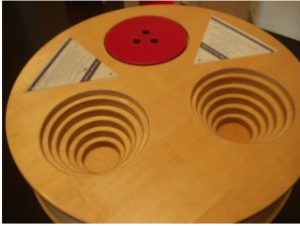Tower of Ionah
The “Tower of Ionah” is the inversion (in a vertical direction) of the famous task of creating the “Tower of Hanoi“. This reversal also gave rise to the name “Ionah“, in that the sequence of the letters H, A, N, O, I changes into I, O, N, A, H by reading from right to left.


